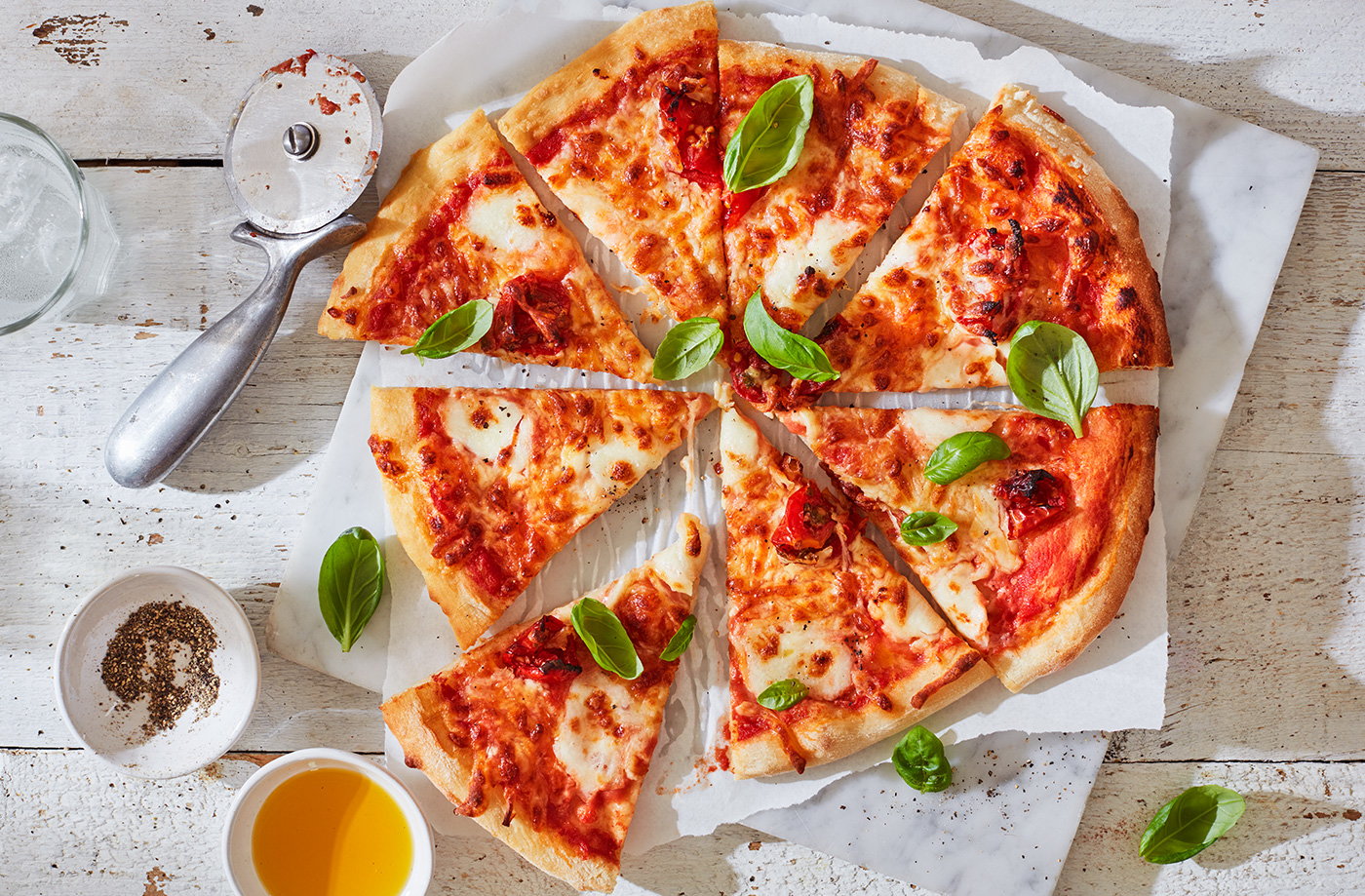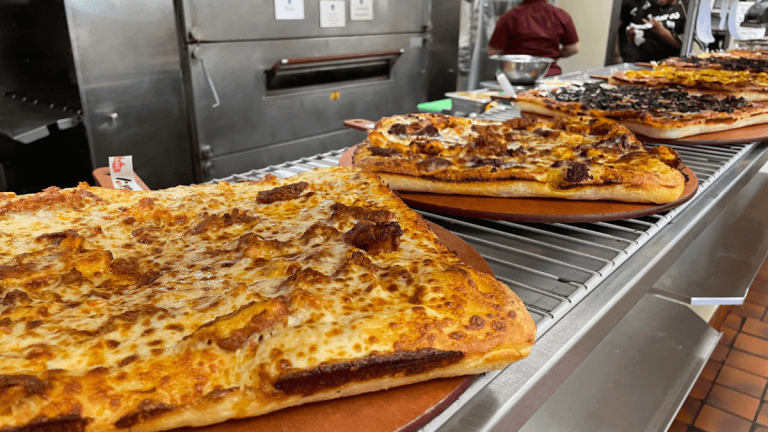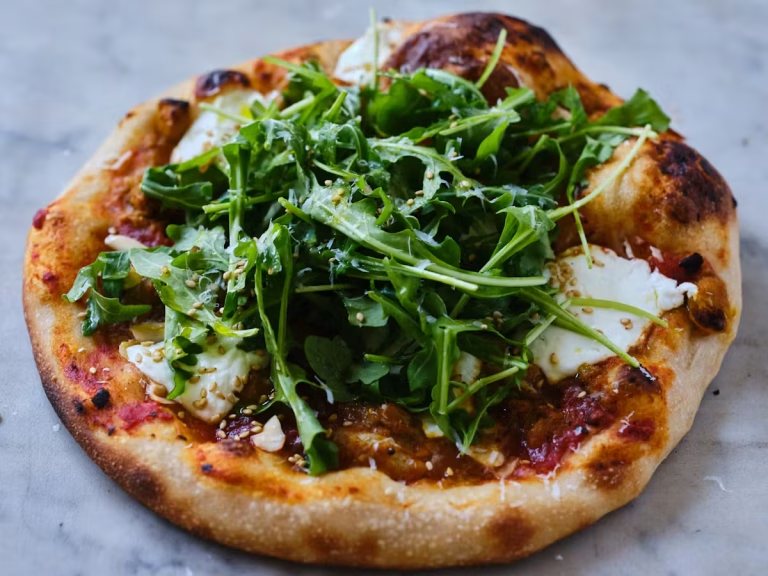Making Your Own Masterwork: An Easy Homemade Pizza Dough Recipe for Beginners
Biting into a pizza slice with a homemade crust has a special sense of satisfaction. The fresh toppings, the bubbling cheese, and the smell of baking dough create an experience that goes beyond a straightforward meal. Although some people may find the thought of creating their own pizza dough daunting, it’s actually quite simple and very satisfying. This guide demonstrates to novices that making a tasty homemade pizza begins in your own kitchen by breaking the process down into easy, doable steps.
Why Make Your Own Pizza Dough?
Beyond the immense satisfaction, crafting your own dough offers several advantages:
- Superior Flavor and Texture: Freshly made dough simply tastes better. You control the ingredients, leading to a crust that’s often more flavorful and has a better chew than pre-made options.
- Customization: Want a thin and crispy crust? A thick and chewy one? You can adjust the recipe slightly to achieve your desired texture.
- Cost-Effective: Making dough from basic pantry staples is significantly cheaper than buying pre-made crusts.
- Therapeutic Process: There’s a calming, almost meditative quality to working with yeast and dough. It’s a fun culinary adventure!
The Essential Ingredients
You’ll be surprised how few ingredients you need for truly excellent pizza dough.
- Warm Water: The ideal temperature is crucial for activating the yeast. Think lukewarm, like a comfortable bath – roughly 105-115°F (40-46°C). Too hot, and you’ll kill the yeast; too cold, and it won’t activate.
- Active Dry Yeast: This is the magic ingredient that makes your dough rise and become airy.
- Sugar (or Honey): Just a pinch helps “feed” the yeast, encouraging it to bloom.
- All-Purpose Flour: While bread flour offers more chew, all-purpose flour works perfectly for beginners and is readily available.
- Salt: Essential for flavor. Don’t skip it!
- Olive Oil: Adds flavor, tenderness, and helps with browning.
Beginner-Friendly Pizza Dough Recipe
This recipe yields one medium-large pizza (approximately 12-14 inches) or two smaller personal pizzas.
Ingredients:
- 1 cup (240ml) warm water (105-115°F / 40-46°C)
- 1 teaspoon active dry yeast
- 1 teaspoon granulated sugar (or honey)
- 2 ½ cups (300g) all-purpose flour, plus more for dusting
- 1 teaspoon salt
- 2 tablespoons olive oil, plus more for the bowl
Equipment:
- Large mixing bowl
- Whisk or spoon
- Measuring cups and spoons
- Clean kitchen towel or plastic wrap
Instructions:
- Activate the Yeast (The “Proofing” Stage):
- In your large mixing bowl, pour in the warm water.
- Sprinkle the yeast and sugar evenly over the water.
- Gently stir once or twice, then let it sit undisturbed for 5-10 minutes.
- You should see a foamy, creamy layer form on the surface. This indicates your yeast is alive and ready to work! If it doesn’t foam, your water might have been too hot or too cold, or your yeast might be old. Start over with fresh yeast.
- Combine Dry Ingredients:
- While the yeast is proofing, in a separate small bowl, whisk together the flour and salt. This ensures the salt is evenly distributed.
- Mix the Dough:
- Once your yeast is foamy, add the 2 tablespoons of olive oil to the yeast mixture.
- Gradually add the flour mixture to the wet ingredients, about half a cup at a time, stirring with a wooden spoon or your hands until a shaggy, somewhat sticky dough forms.
- When it becomes too stiff to stir, turn it out onto a lightly floured surface.
- Knead the Dough:
- This is where the magic happens! Kneading develops the gluten, giving your pizza dough its chewy texture.
- Push the dough away from you with the heels of your hands, then fold it back over towards you. Rotate the dough slightly and repeat.
- Continue kneading for 5-7 minutes. The dough will start off sticky but will become smoother, more elastic, and less sticky as you knead. It should feel soft and pliable. If it’s too sticky, add a tiny bit more flour; if too dry, a tiny bit more water.
- First Rise (Bulk Fermentation):
- Lightly grease your large mixing bowl with a little olive oil.
- Place the kneaded dough in the bowl, turning it once to coat all sides with oil.
- Cover the bowl tightly with plastic wrap or a clean, damp kitchen towel.
- Place the bowl in a warm, draft-free spot. A slightly warm oven (turned off, but perhaps preheated to its lowest setting for 5 minutes then turned off) or simply a warm kitchen counter works well.
- Let the dough rise for 60-90 minutes, or until it has doubled in size. This process allows the yeast to work and develop flavor.
- Punch Down and Shape:
- Once the dough has doubled, gently punch it down to release the air. This makes it easier to handle.
- Turn the dough out onto a lightly floured surface.
- You can now shape it into one large pizza crust or divide it in half for two smaller ones. Gently flatten the dough into a disk, then use your hands to stretch it from the center outwards, rotating as you go. You can also carefully lift it and let gravity help stretch it, being careful not to tear it. Aim for your desired thickness.
Tips for Pizza Perfection:
- Don’t Over-Flour: Too much flour makes a tough crust. Use just enough to prevent sticking.
- Preheat Your Oven (and Pizza Stone/Steel): For a crispy crust, a very hot oven is crucial. Preheat your oven to its highest setting (usually 475-500°F / 245-260°C) with your pizza stone or baking steel inside for at least 30-60 minutes before baking.
- Use Semolina or Cornmeal: Sprinkle a little semolina flour or cornmeal on your pizza peel (or the back of a baking sheet) before placing the shaped dough on it. This acts like tiny ball bearings, helping the pizza slide easily into the hot oven.
- Don’t Overload: Too many toppings can make the crust soggy and prevent it from cooking evenly. Less is often more with pizza.
- Baking Time Varies: A homemade pizza usually bakes in 8-15 minutes, depending on your oven and desired crispness. Keep an eye on it!
Making homemade pizza dough is a satisfying journey, and each time you try, you’ll gain more confidence and finesse. Enjoy the process, experiment with toppings, and savor the incredible taste of your very own culinary creation!



